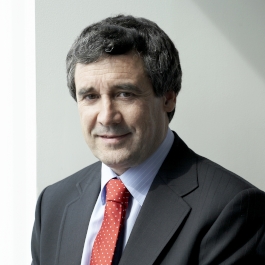Retirement
New SMSFs must get the fundamentals right before July changes
With a new financial year fast approaching, many Australians will be considering starting an SMSF. This year, however, it’s more important than ever to get the basics right.
New SMSFs must get the fundamentals right before July changes
With a new financial year fast approaching, many Australians will be considering starting an SMSF. This year, however, it’s more important than ever to get the basics right.

New SMSF trustees face something of a double challenge in 2017-2018. Coming to terms with both the long-standing fundamentals of having your own fund and the biggest changes to super in a decade.
It is critical for new trustees not to neglect any of the fundamentals of self-managed super in their efforts to understand the changing super system from the beginning of July.
The first few months of a new financial year are among the most popular times to establish an SMSF. Often, investors aim to begin their self-managed approach to super with a fresh start for a new financial year and to spread their administration costs over the entire 12 months rather than part of a year.
In many cases, members switching from large APRA-regulated funds would time the establishment of their SMSFs with their retirement at the end of a financial year or relatively early in a new financial year.

If you are aiming to set up an SMSF from the beginning of 2017-18, preparations obviously should begin well in advance.
Fundamentals for would-be SMSF trustees to begin thinking about now include:
Setting a compulsory investment strategy
SMSF trustees are legally required to prepare, implement and regularly review an investment strategy that has regard to the whole circumstances of their fund. These circumstances include – investment risks, likely returns, liquidity, investment diversity, risks of inadequate diversity and ability to pay member benefits. (There are free courses available for SMSF trustees.)
Investing within the rules
Trustees must maintain a super fund for the sole purpose of providing member retirement benefits, not provide loans or financial assistance to members or their relatives; separate SMSF assets from their own personal or business assets; conduct transactions on an arm’s length basis and adhere to the investment restrictions under the in-house asset rule.
Under the in-house asset rule in superannuation law, an SMSF is generally prohibited from making loans, providing leases or having investments with related parties and entities that exceed 5 per cent of its total asset value. Certain exceptions apply including business property.
Choosing an SMSF’s strategic asset allocation
A portfolio’s asset allocation – the proportions of its total assets that are invested in different asset classes of mainly local and overseas shares, property, fixed interest and cash – spreads risks and opportunities. Research has long found that a diversified portfolio–s strategic asset allocation is responsible for the vast majority of its return over time.
Selecting investments within an SMSF’s strategic asset allocation
SMSFs often adopt a core satellite approach to invest in accordance with their asset allocation. With this strategy, the core of their portfolio is held in low-cost traditional index funds or exchange-traded funds (ETFs) tracking selected indices with smaller satellites of favoured direct securities and/or actively-managed funds. As the Vanguard/Investment Trends 2016 Self-Managed Super Fund Report shows, SMSFs are among the biggest and longest supporters of ETFs.
Deciding whether to take specialist SMSF advice
Most SMSF trustees receive some professional guidance ranging from administration services up to full financial planning. And specialist SMSF advice can be particularly valuable when a fund is being established.
For the past 16 years or so, Vanguard analysts have studied ‘adviser’s alpha’. This is the value that advisers can add through their wealth management and financial planning skills – guiding their clients in such areas as asset allocation, cost and tax efficiency, and portfolio rebalancing – and as behavioural coaches.
Skilled advisers can add considerable value by using skillful wealth-management practices together with personally encouraging their clients to adopt disciplined, long-term approaches to investing.
New SMSF trustees in 2017-18 will be joining a force of around 600,000 SMSFs with more than $600 billion in assets.
Robin Bowerman, head of market strategy and communications, Vanguard Australia and vice chairman of the SMSF Association

Self managed super fund
Financial progress hinges on ambition, not income, says Stake Report
Australia faces a financial turning point, with new research from online investment platform Stake revealing a nation divided into two distinct groups: the 'Starters', who invest and feel in control ...Read more

Self managed super fund
OKX targets Australia's $1 trillion SMSF market with new crypto platform launch
In a significant move aimed at capitalising on Australia's burgeoning digital asset market, global onchain technology company OKX has unveiled a new Self-Managed Super Fund (SMSF) expansion on its ...Read more

Self managed super fund
Industry leaders launch SMSF Innovation Council to drive digital transformation
A consortium of finance industry leaders has launched an SMSF Innovation Council to help Australia's $1.02 trillion self-managed superannuation fund industry navigate digital transformation. Read more

Self managed super fund
Superannuation guarantee to be paid on government paid parental leave, says ASFA
The Association of Superannuation Funds of Australia (ASFA) has hailed the government's decision to include Superannuation Guarantee payments with its Paid Parental Leave policy as a critical step ...Read more

Self managed super fund
SMSF experts advise against hasty reactions to potential super tax changes
As the Australian Government proposes a new tax measure on superannuation earnings for balances exceeding $3 million, experts from the self-managed super funds (SMSF) sector are urging members not to ...Read more

Self managed super fund
Federal government announces changes to superannuation contribution caps
The Federal Government has announced changes to the superannuation contribution caps, impacting self-managed super funds (SMSFs) and their members from 1 July 2024. Read more

Self managed super fund
SMSF Association calls for joint effort to tackle early super access
The SMSF Association is calling on a collaborative approach including the Government, the Australian Taxation Office (ATO), the Australian Securities and Investments Commission (ASIC), and the ...Read more

Self managed super fund
Rest Super members file class action over alleged insurance premium deductions
Shine Lawyers has initiated a class action lawsuit against Rest Superannuation (Rest), alleging the unlawful deduction of income protection insurance premiums from members' superannuation accounts. Read more

Self managed super fund
Financial progress hinges on ambition, not income, says Stake Report
Australia faces a financial turning point, with new research from online investment platform Stake revealing a nation divided into two distinct groups: the 'Starters', who invest and feel in control ...Read more

Self managed super fund
OKX targets Australia's $1 trillion SMSF market with new crypto platform launch
In a significant move aimed at capitalising on Australia's burgeoning digital asset market, global onchain technology company OKX has unveiled a new Self-Managed Super Fund (SMSF) expansion on its ...Read more

Self managed super fund
Industry leaders launch SMSF Innovation Council to drive digital transformation
A consortium of finance industry leaders has launched an SMSF Innovation Council to help Australia's $1.02 trillion self-managed superannuation fund industry navigate digital transformation. Read more

Self managed super fund
Superannuation guarantee to be paid on government paid parental leave, says ASFA
The Association of Superannuation Funds of Australia (ASFA) has hailed the government's decision to include Superannuation Guarantee payments with its Paid Parental Leave policy as a critical step ...Read more

Self managed super fund
SMSF experts advise against hasty reactions to potential super tax changes
As the Australian Government proposes a new tax measure on superannuation earnings for balances exceeding $3 million, experts from the self-managed super funds (SMSF) sector are urging members not to ...Read more

Self managed super fund
Federal government announces changes to superannuation contribution caps
The Federal Government has announced changes to the superannuation contribution caps, impacting self-managed super funds (SMSFs) and their members from 1 July 2024. Read more

Self managed super fund
SMSF Association calls for joint effort to tackle early super access
The SMSF Association is calling on a collaborative approach including the Government, the Australian Taxation Office (ATO), the Australian Securities and Investments Commission (ASIC), and the ...Read more

Self managed super fund
Rest Super members file class action over alleged insurance premium deductions
Shine Lawyers has initiated a class action lawsuit against Rest Superannuation (Rest), alleging the unlawful deduction of income protection insurance premiums from members' superannuation accounts. Read more








